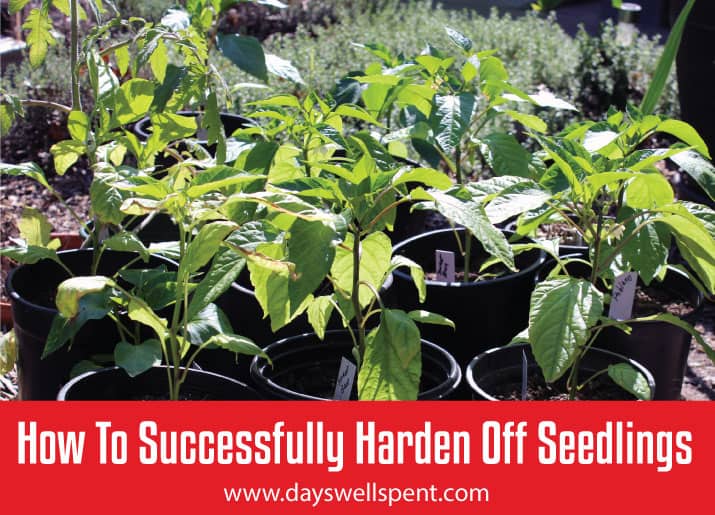
WHAT IS HARDENING OFF?
Successfully Hardening Off Seedlings isn’t hard, but it is an important step in gardening. In order to give plants a chance to grow from seed to mature, fruit-bearing plants, gardeners need to start plants indoors during the winter and transplant them outside once the temperatures are warm in the spring. “Hardening off” is simply moving plants outside for a portion of the day to slowly introduce them to the sunlight, dry air, and cold nights.
WHY YOU SHOULD HARDEN OFF
Have you ever gone outside on a chilly day without a coat on after being inside a warm house? It’s a shock, isn’t it?! The same is true for our seedlings/transplants. We’ve had them inside for weeks, maybe even months. We pamper them with just the right amount of water, light, and the ideal temperature. If you plant them outside without hardening off it can be a shock to their system. The roots aren’t ready for the change in temperature in the soil. The stems aren’t ready for the wind, and the delicate leaves aren’t ready to have the sun beating down on them all day.
BEFORE YOU HARDEN OFF
About two weeks before you plan to start hardening off your plants you’ll want to stop feeding them if you’ve been fertilizing and decrease your watering. You don’t want to allow the plants to dry out but the soil does need to slowly be less moist. Another helpful bit is to move your hand gently across the leaves' tops several times a day. That stimulates a light breeze.
WHAT HAPPENS DURING HARDENING OFF
The goal of hardening off is to cause plant cell walls to thicken, changing soft, succulent growth to firmer, harder tissue. Hardening off causes the following changes in plant growth and development.
- Plant growth slows.
- Natural waxes on leaf surfaces thicken as plants are exposed to more sun, reducing the rate of water loss.
- Cell walls develop more lignin to strengthen them.
- The amount of freeze-prone water in plant cells is reduced.
- The number of carbohydrates (stored food reserves) in plant tissues increases.
- More rapid root development is stimulated.
HOW TO SUCCESSFULLY HARDEN OFF SEEDLINGS
- Harden off gradually so seedlings become accustomed to strong sunlight, cool nights, and less-frequent watering over a 10-14 day period.
- Start with 2-3 hours of sun on a mild day in a sheltered location.
- Protect seedlings from strong sun, wind, hard rain, and cool temperatures.
- Increase exposure to sunlight a few additional hours at a time and gradually reduce the watering frequency, but do not allow seedlings to wilt. Avoid fertilizing.
- Keep an eye on the weather and listen to the low-temperature prediction. If temperatures below the crop’s minimum are forecast, bring the plants indoors or close the cold frame and cover it with a blanket or other insulation.
- Know the relative hardiness of your plants. Hardy cool-season plants can take temperatures in the 40’s. After they are well hardened off, light frosts won’t hurt them. Warm-season plants prefer warm nights, at least 60 degrees F. They can’t stand below-freezing temperatures, even after hardening off. After these minimum night temperatures are exceeded, place transplants in the garden.
- Gradually increase exposure to cold.
- After transplanting to the garden, use a weak fertilizer solution to get transplants growing again and to help avoid transplant shock. Be sure to water plants after hardening them off.
Hardening off your seedlings/transplants isn’t hard, but it is a necessary step to help ensure your plant’s transplant is successful. If you don’t currently start your own seedlings, be sure to read our post, the benefits of growing your own seedlings. If you’re interested in gardening and homesteading videos, visit Days Well Spent on YouTube. Do you have any questions about hardening off? Let me know in the comments section.
